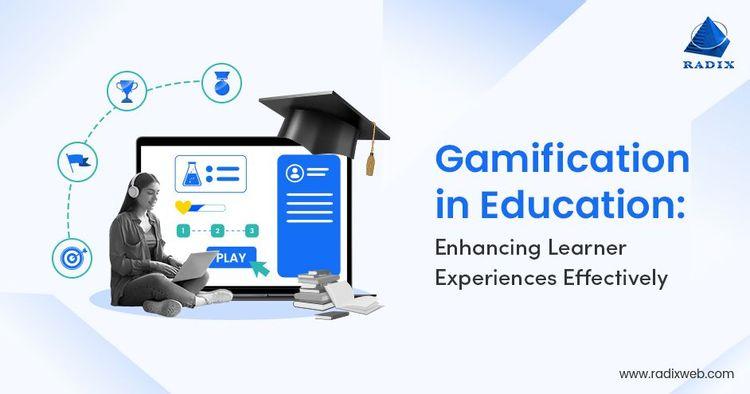How to Integrate Gamification into Standard Curricula for Engaging Learning Experiences
Education is evolving, and so are the methods employed to inspire and engage students in classrooms worldwide.Integrating gamification into standard curricula is quickly becoming a powerful way to transform learning experiences. Not only can it boost student motivation, but it also nurtures essential skills like problem-solving, collaboration, and critical thinking. In this article, we’ll explore effective strategies, case studies, and practical tips for educators looking to harness the immense potential of gamified learning.
What Is Gamification in Education?
Gamification in education involves applying game design elements—such as points, badges, leaderboards, and rewards—to customary teaching methods. This approach transforms mundane lessons into interactive, fun, and competitive activities, fostering higher engagement and a deeper understanding of subject matter.
- Points & Rewards: Students earn points for achievements such as completing assignments, participating, or collaborating.
- Levels: Progression through “levels” when mastering certain topics.
- Badges: Recognitions for specific accomplishments, such as perfect attendance or notable improvement.
- Leaderboards: Healthy competition encourages effort and celebrates progress.
- Challenges and Quests: Project-based learning disguised as games or missions.
Benefits of Gamification in Standard Curricula
When thoughtfully integrated, gamification offers a multitude of benefits in both K-12 and higher education settings:
- Higher Student Engagement: Game mechanics naturally captivate students’ attention, making learning enjoyable and immersive.
- Enhanced Motivation: Speedy feedback,rewards,and progression systems boost motivation to participate and achieve.
- Improved Retention: Active participation helps students retain knowlege better compared to passive learning.
- Individualized Learning Paths: Gamification allows for tailored experiences based on individual student progress and mastery.
- Collaboration and Social Skills: many gamified activities promote teamwork and communication, fostering social progress.
- real-Time Feedback and Data: Teachers can quickly identify areas where students need support through in-game analytics.
How to Integrate Gamification into Standard Curricula: Step-by-Step Guide
Successfully embedding gamification into your curriculum doesn’t require a complete overhaul—often, small tweaks make a big impact. Follow this step-by-step plan to get started:
1. define Learning Objectives
- Clearly identify what students should achieve through the lesson or unit.
- Align gamified activities with curriculum standards and expected outcomes.
2.Select Relevant Game Elements
- Decide which gamification tools—points, badges, quests—suit your class dynamics and objectives.
- Mix competitive and cooperative elements to engage all learners.
3. Design Gamified Activities and Assessments
- Transform classwork, quizzes, and projects into interactive challenges.
- Incorporate progress bars, digital badges, or instant feedback on assignments.
4. Choose and Implement technology
- Utilize user-amiable tools and platforms like Kahoot!, Classcraft, Quizizz, or Google Classroom with integrated gamification plugins.
- Ensure ease of use for both you and your students; consider compatibility with existing LMS platforms (e.g.,Moodle,Canvas).
5. Foster a Growth Mindset
- Encourage students to view setbacks as learning opportunities rather than failures.
- Reward effort and progress, not just achievement.
6. Monitor, Assess, and Adjust
- Gather feedback through student surveys, class discussions, and in-game analytics.
- Refine your approach based on what works best for your unique classroom environment.
Best Practices and Tips for Gamification in Education
To maximize the effectiveness of gamified learning experiences, consider these essential best practices:
- Start Small: Introduce one or two gamification elements at a time to avoid overwhelming students or yourself.
- Maintain Balance: Combine gamified activities with traditional methods for a diverse and inclusive curriculum.
- Encourage Intrinsic motivation: Design challenges that stimulate curiosity and personal growth beyond extrinsic rewards.
- Make rules Clear: Establish clear criteria for earning points,badges,or progressing to the next level.
- Promote Collaboration: Include team-based games and cooperative quests to foster peer support.
- Be Inclusive: adapt your gamification framework for students of all abilities and backgrounds.
case Studies and Real-life Examples
Here are a few inspiring examples of gamification in action within curricula:
- Elementary School Math with Kahoot! Quizzes: Teachers observed a 30% increase in quiz participation and improved test scores after introducing weekly competitive quizzes, where students earned digital trophies.
- Middle School Science “Escape Rooms”: Using a gamified escape room challenge, students worked in teams to solve puzzles based on recent lessons. Collaboration and retention of key concepts soared, and student feedback was overwhelmingly positive.
- High School Literature “Badges for Books”: literature teachers awarded badges for independant reading and creative writing, creating a friendly rivalry and turning reluctant readers into engaged literary explorers.
- Higher Education with Classcraft: university professors built epic quests and narrative-based assignments using Classcraft. Student attendance and on-time submissions significantly improved, with students citing increased motivation and enjoyment.
Gamification Tools and Resources
Here is a curated list of popular gamification resources that can be easily integrated into the classroom:
- Kahoot! – Engaging quizzes and quick polls.
- Classcraft – Team-based narrative learning adventures.
- Quizizz – Self-paced gamified assessments.
- Edmodo – Gamification plugins and badges.
- Moodle – Supports badges, leaderboards, and customized gamified experiences.
For educators using WordPress websites, consider LMS plugins like LearnPress or learndash that offer gamification extensions for tracking progress, awarding certificates, and fostering engagement online.
Conclusion: Gamification as a Catalyst for Engaging Learning Experiences
integrating gamification into standard curricula is more than a fleeting educational trend—it’s a powerful shift toward engaging and effective learning experiences. By blending the structure of games with academic content, educators can ignite students’ passion for learning, boost motivation, and better meet diverse educational needs. Whether you’re a seasoned teacher or just starting your journey, the principles and best practices outlined above can help you create a dynamic classroom where students are eager to learn and grow.
Start small, experiment with different strategies, and listen to your students’ feedback. Gamification can make a lasting impact, transforming classrooms into vibrant communities of curiosity, collaboration, and success.

